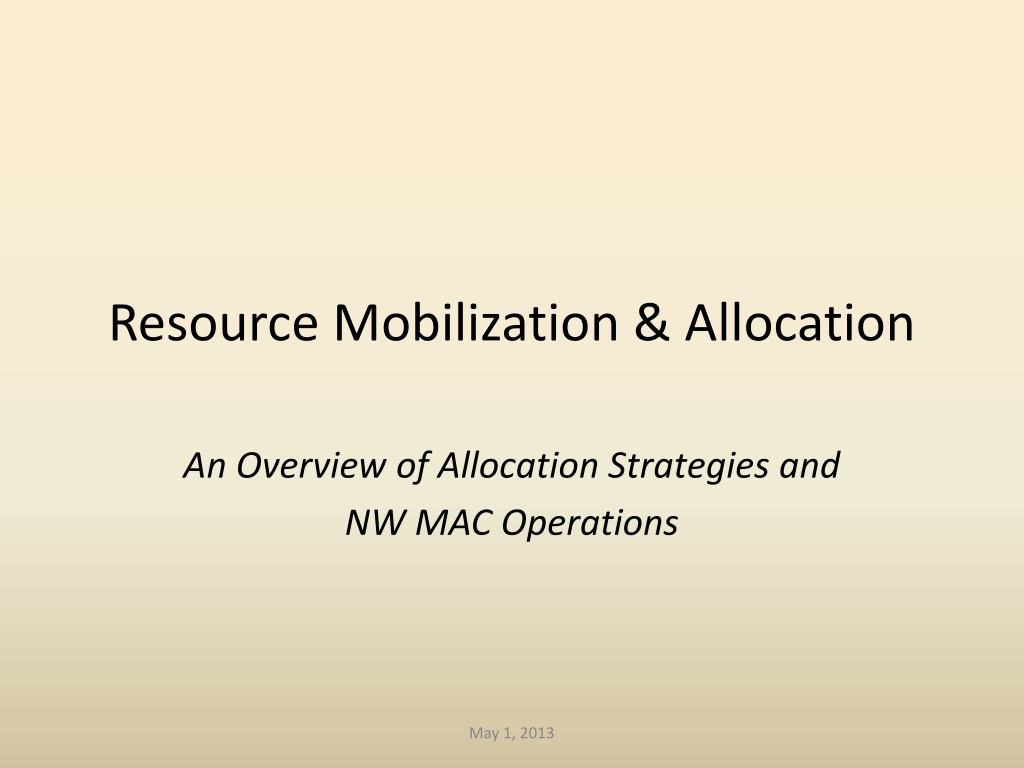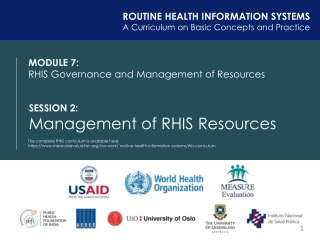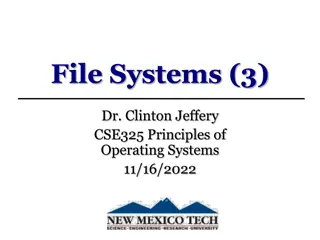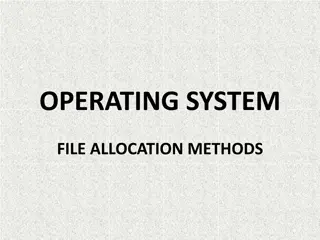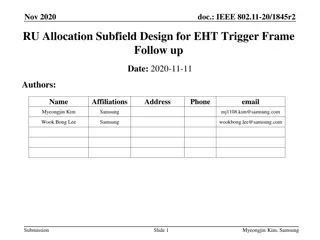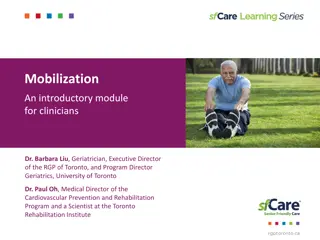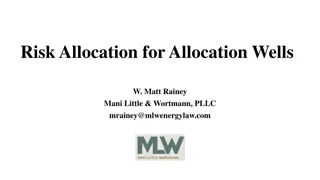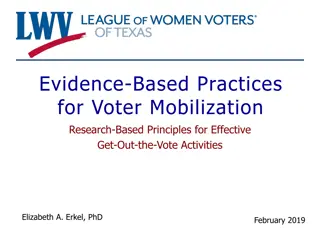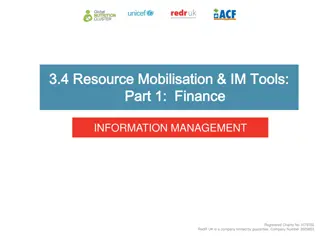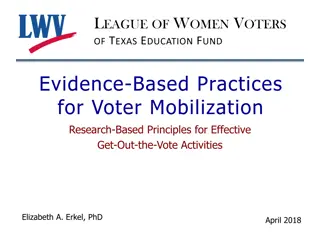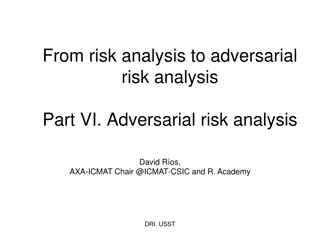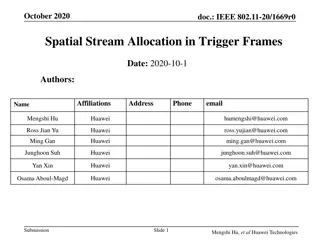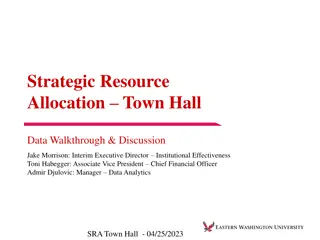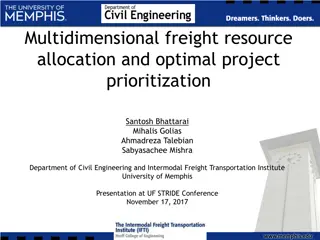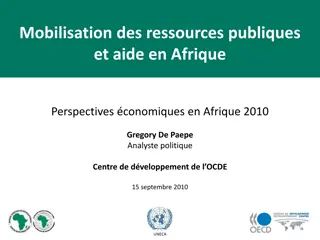Resource Mobilization and Allocation Strategies Overview
This overview covers five key allocation strategies for addressing resource shortages in emergency situations, including Lend-Lease, Pre-Positioning, IMT Reserve, Resource Reallocation, and Surge Task Force. Each strategy is defined along with its purpose and implementation. By understanding these strategies, emergency responders can better manage and allocate resources effectively.
Download Presentation

Please find below an Image/Link to download the presentation.
The content on the website is provided AS IS for your information and personal use only. It may not be sold, licensed, or shared on other websites without obtaining consent from the author. Download presentation by click this link. If you encounter any issues during the download, it is possible that the publisher has removed the file from their server.
E N D
Presentation Transcript
Resource Mobilization & Allocation An Overview of Allocation Strategies and NW MAC Operations May 1, 2013
Five Allocation Strategies for Addressing chronic resource shortages Lend-Lease Pre-positioning IMT Reserve Surge Task Force Reallocation May 1, 2013
Lend/Lease Fire #1 Fire #2 Definition An agreement between IMT s to allow for the use of their assigned resources on another incident for a short-term mission. Generally not to exceed one to three burning periods. Resource use validated each day. Why? Fills a critical short term operational need between incidents in close proximity. Allows Incident Commanders to share resources, increase efficiencies, and to simplify the process. May 1, 2013
Pre-Positioning Fire #1 Fire #2 Resources within NW Pre-Position Location Fire #3 Resources outside NW Definition Mobilization of a resource(s) of a specific type and number, to a defined location, in anticipation of critical initial attack/extended attack. Authority to mobilize these resources rests with NWCC in concurrence with NW MAC. Why? Pre-identified resources are made available for prompt response within a sub-geographic area. Resources can be hosted at other incidents, at a local unit, or held in staging (and not at home). Resources provide the capability to enhance current initial/extended attack capability. May 1, 2013
IMT Reserve Resources within NW Resources outside NW Reassigned Resources Preparedness Resources Pre-Position Resources New Large Fire NWMAC Definition A resource package assembled to provide an IMT with minimal capacity to achieve incident objectives. Why? Ensures some level of effectiveness for an IMT ordered to an incident. May 1, 2013
Resource Reallocation Lower Priority Fire/Mission Higher Priority Fire/Mission NW MAC Definition The act of reassigning resources already owned by one incident to another, higher priority, incident. For comparison, allocation refers to the act of assigning to an incident resources that were previously unassigned. Why? Responds to the strategic management of a geographic area. Routes critical resources to the highest priority incident. May 1, 2013
Surge Task Force Resources outside NW Pre-Position Location NW MAC Reassigned Resources Critical Mission Specific Assignment Preparedness Resources Resources within NW Definition Surge Task Forces are pre-identified suppression resources with overhead that can effectively and efficiently implement special mission operations in a 1 to 4 day time period. (See Handout) Why? Responds to the strategic management of a geographic area. Routes critical resources to the highest priority mission across all incidents. May 1, 2013 7
Surge Task Force Request To ensure accomplishment of a critical mission, IC completes the STF request. Mission task and how it is tied to incident strategy: NW MAC reviews/approves request and assembles the task force. STF is lend-leased to the requesting incident. Days needed to accomplish task Probability of Success (%) STF time/tracking is maintained by NW MAC and the incident. Consequence of not filling request When mission is accomplished, the STF is moved to the next critical mission or disbanded. Submitted by (IC/AC name) Date: This form is available at http://www.nwccweb.us/admin/nw_mac.asp May 1, 2013
Redmond Mobilization Center (RAC Mob) Activated by NWCC per agreement with RAC. Orders placed from NWCC to COIDC. Low Level activation for self-sufficient resources needing little admin support. High Level activation for high-use/non-self sufficient resource support. Can be placed in stand-by mode or de-activated when not in use. May 1, 2013
NW MAC Operations May 1, 2013
NW MAC Operations: Delegated Authority Regional Agency Administrator Unit Agency Administrator Center Manager Fire Manager MAC Rep Incident Commander NWCC MAC Support Incident May 1, 2013
Questions? See the following links for more information: Resource Allocation Strategies: http://www.nwccweb.us/content/pdfs/NWFinal_ResAlloc.pdf NW MAC Operations Handbook: http://www.nwccweb.us/content/pdfs/2012Final_NW%20MAC%20Ops%20Handbook.pdf May 1, 2013
